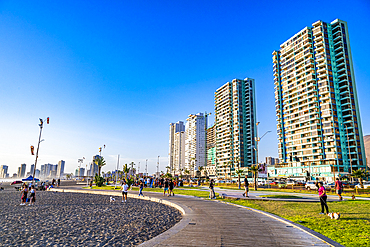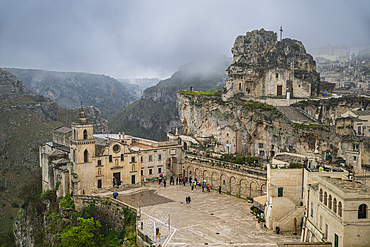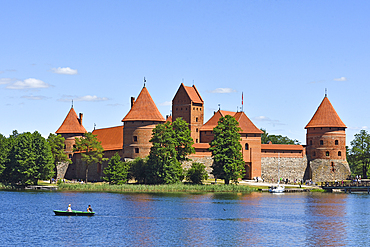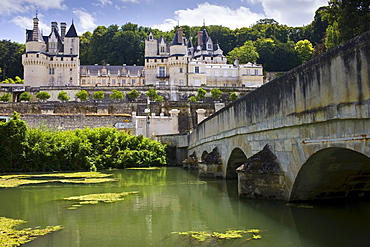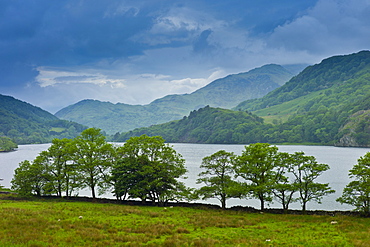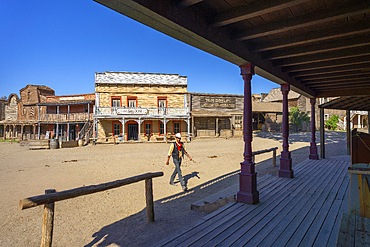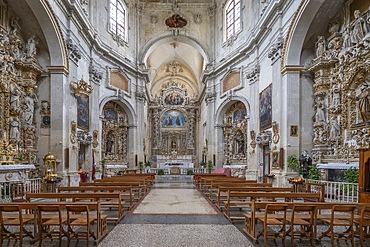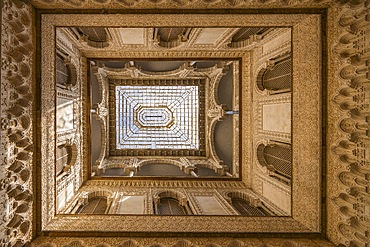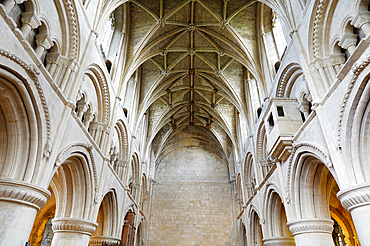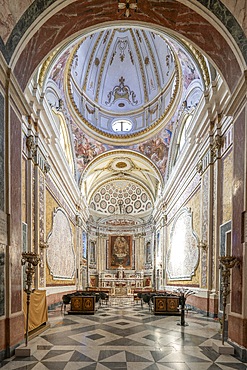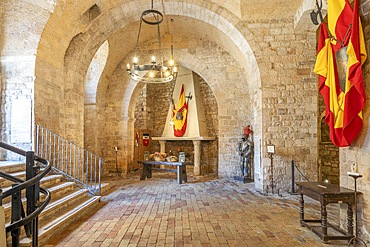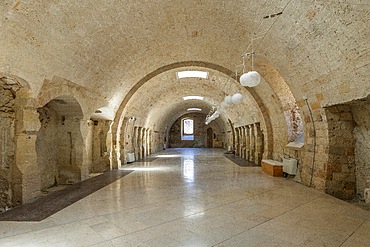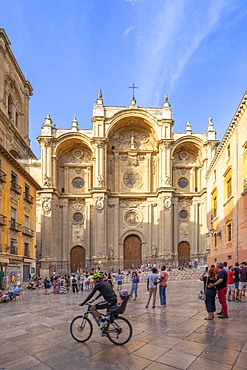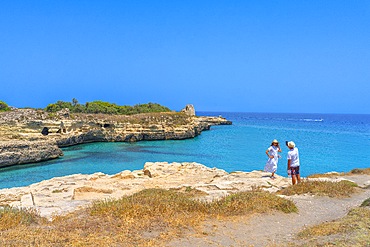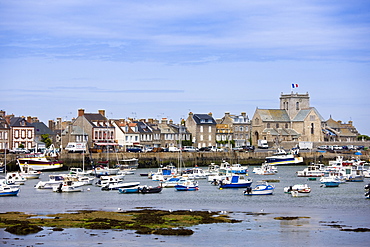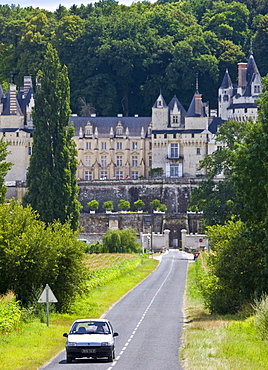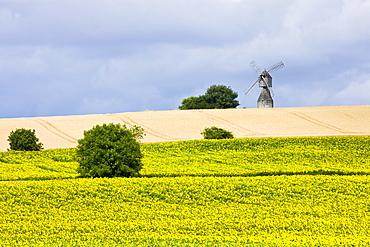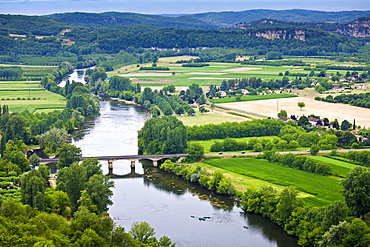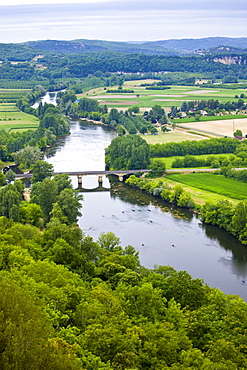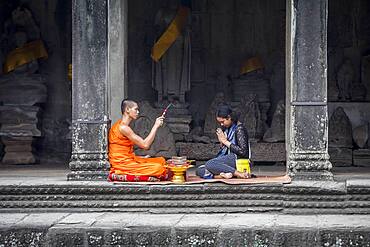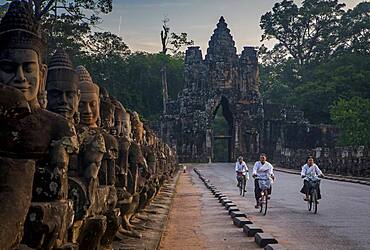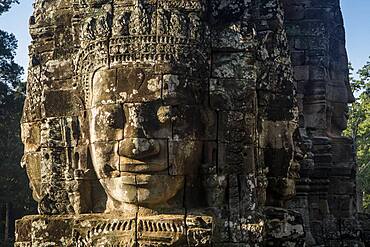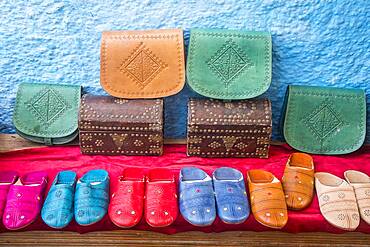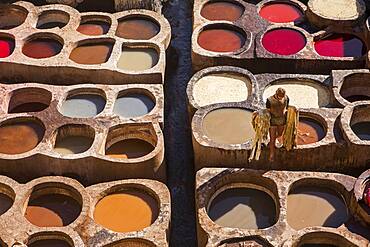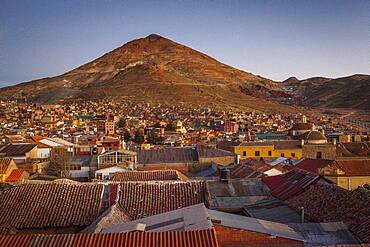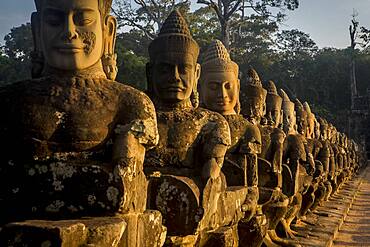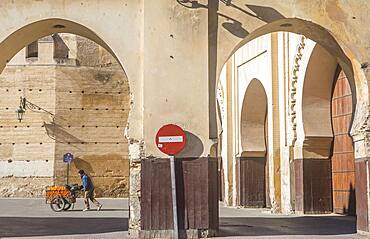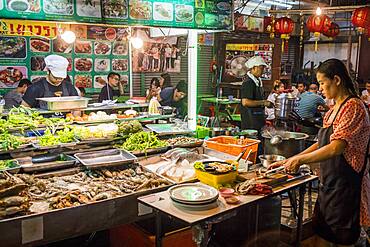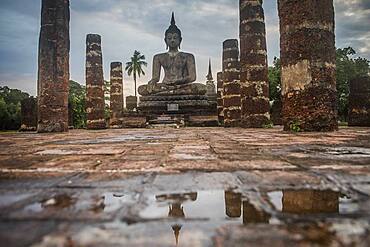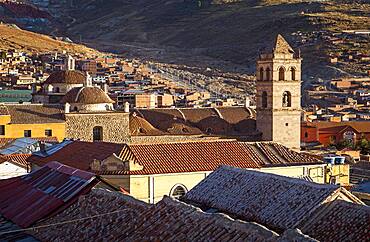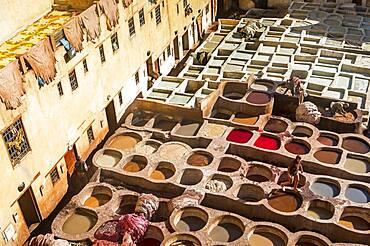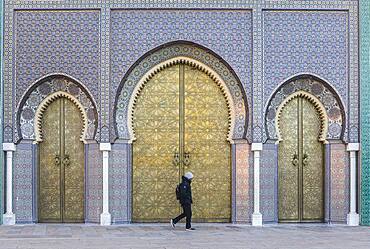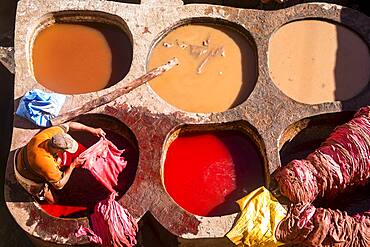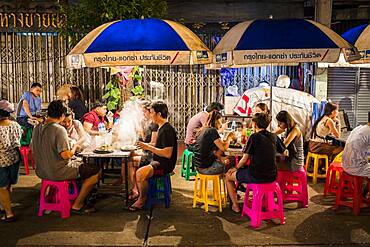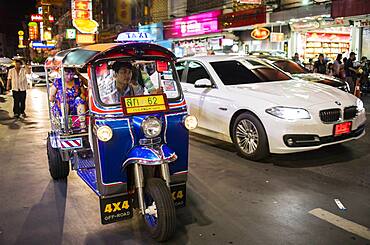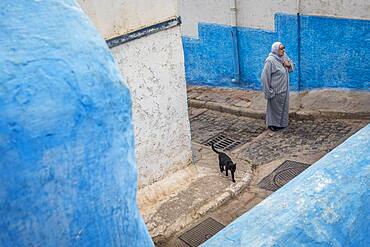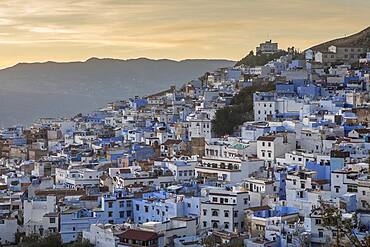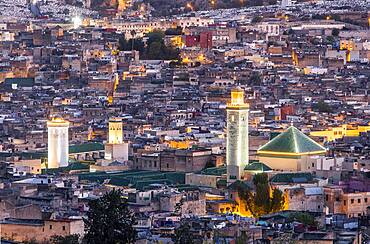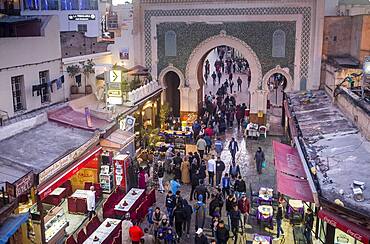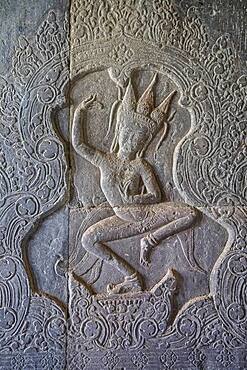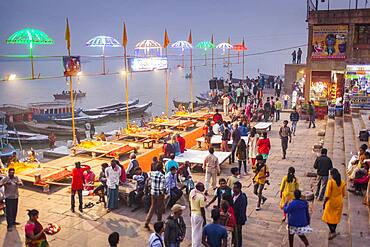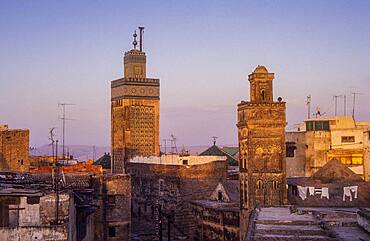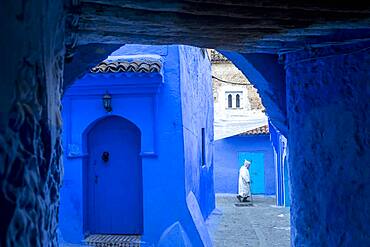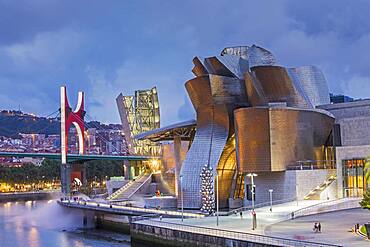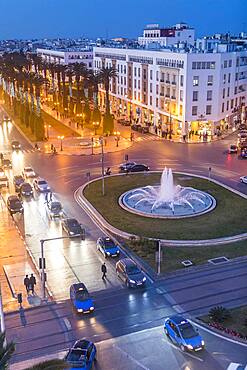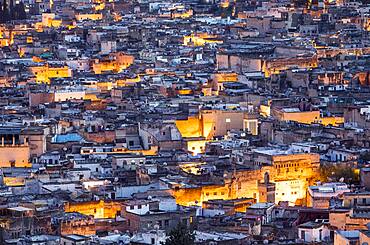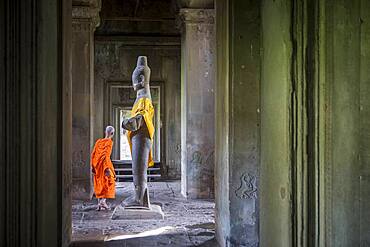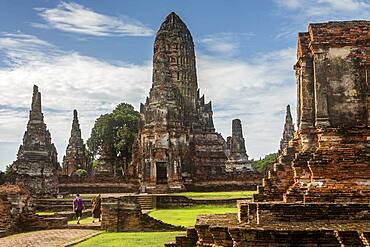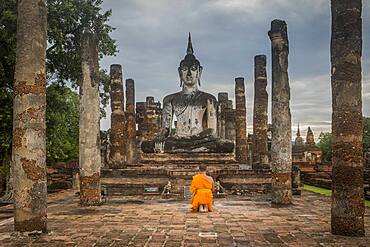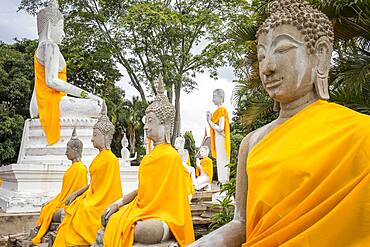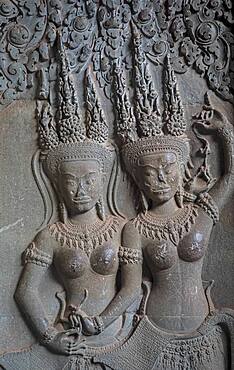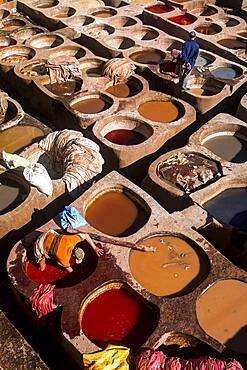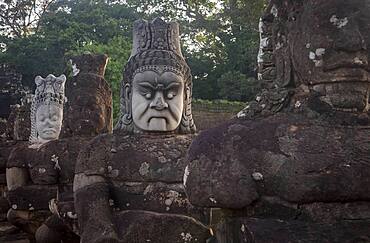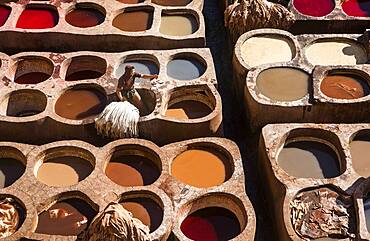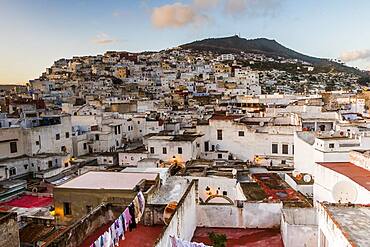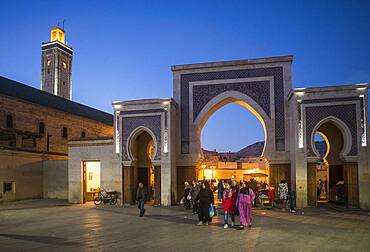Results
« Previous 1 … 12 13 14
1311 results found

Panoramic aerial view over Masca village, the most visited tourist attraction, Tenerife, Canary Islands, Spain, Atlantic, Europe

Panoramic aerial view over Masca village, the most visited tourist attraction, Tenerife, Canary Islands, Spain, Atlantic, Europe
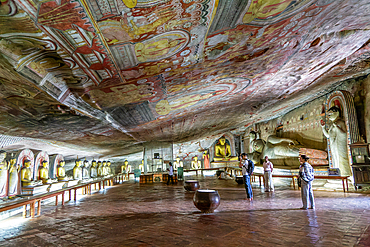
Buddha figures inside Dambulla cave Buddhist temple complex, UNESCO World Heritage Site, Sri Lanka, Asia
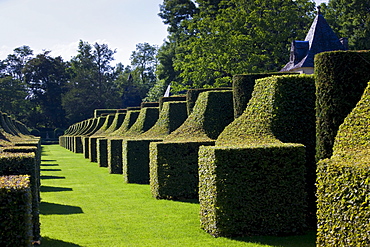
Les Jardins de Manoir d"Eyrignac gardens, the Hornbeam Alley, at Salignac near Sarlat, Dordogne, France
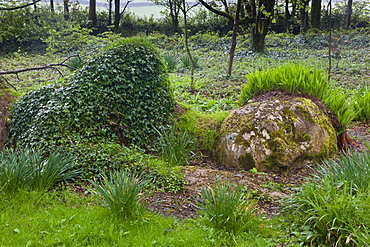
Mud Maid earth woman sculpture of stone and plants at the Lost Gardens of Heligan tourist attraction, Cornwall, England
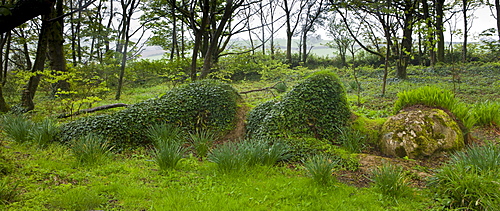
Mud Maid earth woman sculpture of stone and plants at the Lost Gardens of Heligan tourist attraction, Cornwall, England
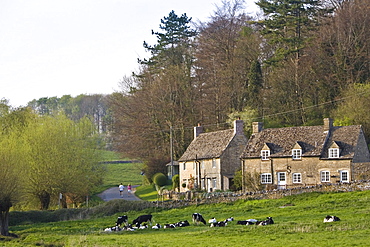
Two people walk past village scene of Oxfordshire cottages and Friesian cows, Swinbrook, The Cotswolds, England, United Kingdom
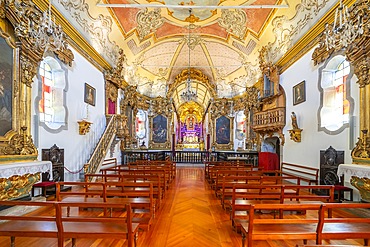
Capela Nossa Senhora da Agonia (Chapel of Our Lady of Agony), Viana do Castelo, Minho-Lima, Portugal
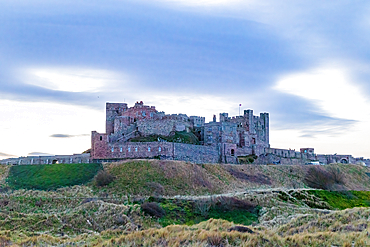
Majestic medieval castle on a hill with cloudy sky at dusk, showcasing historical architecture, Northumberland, England, United Kingdom, Europe
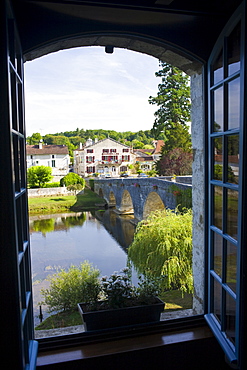
View of town of Bourdeilles, popular as a tourist destination near Brantome in Northern Dordogne, France
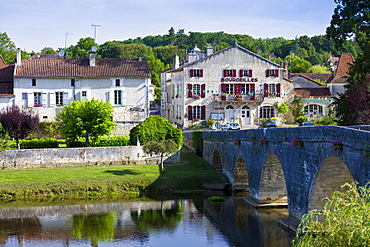
Quaint town of Bourdeilles, popular as a tourist destination near Brantome in Northern Dordogne, France
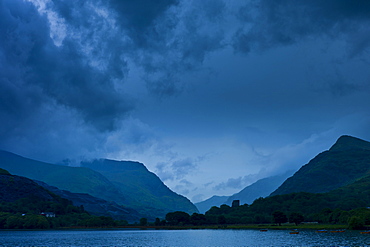
Llanberis Pass with Snowdonia on right, Dolbadarn Castle and Llyn Padarn lake, in Snowdonia National Park, Wales
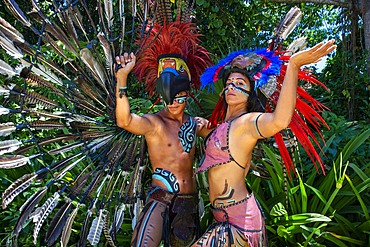
Mexican aztec dress gods at Grand Palladium White Sand Resort and Spa in Riviera Maya, Yucatan Peninsula, Quintana Roo, Caribbean Coast, Mexico.
Aztec clothing was generally loose fitting and did not completely cover the body. When the Spanish arrived in Mexico, the people were surprised to see them in their full armour, with only their faces exposed.
Aztec clothes were generally made of cotton (which was imported) or ayate fiber, made from the Maguey Cactus (also called the Century Plant or American Aloe). Women would weave the fibers into clothing, a task girls were taught as young teenagers. Because of their vast trading network, the Aztecs were able to make use of a beautiful array of dyes, creating the brilliant
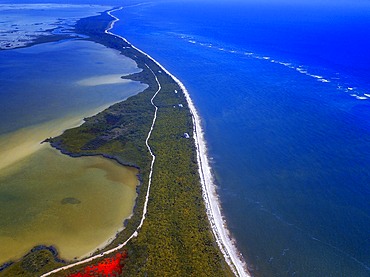
Aerial view of Punta Allen Sian Ka'an Reserve, Yucatan Peninsula, Mexico. Red lagoon near Boca Paila Bridge.
In the language of the Mayan peoples who once inhabited this region, Sian Ka'an means Origin of the Sky. Located on the east coast of the Yucatán peninsula, this biosphere reserve contains tropical forests, mangroves and marshes, as well as a large marine section intersected by a barrier reef. It provides a habitat for a remarkably rich flora and a fauna comprising more than 300 species of birds, as well as a large number of the region's characteristic terrestrial vertebrates, which cohabit in the diverse environment formed by its complex hydrological system.
Along its roughly 120 kilometres of coastline, the property covers over 400,000 hectares of land ranging from sea level to only ten m.a.s.l. The property boasts diverse tropical forests, palm savannah, one of the most pristine wetlands in the region, lagoons, extensive mangrove stands, as well as sandy beaches and dunes. The 120,000 hectares of marine area protect a valuable part of the Mesoamerican Barrier Reef and seagrass beds in the shallow bays. The lush green of the forests and the many shades of blue of the lagoons and the Caribbean Sea under a wide sky offer fascinating visual impressions.

Aerial views of El Castillo and the Ruins of the Mayan temple grounds at Tulum, Quintana Roo, Yucatan, Mexico. Tulum is the site of a pre-Columbian Mayan walled city which served as a major port for Coba, in the Mexican state of Quintana Roo. The ruins are situated on 12 meter 39 ft tall cliffs along the east coast of the Yucatán Peninsula on the Caribbean Sea in the state of Quintana Roo, Mexico. Tulum was one of the last cities built and inhabited by the Maya; it was at its height between the 13th and 15th centuries and managed to survive about 70 years after the Spanish began occupying Mexico. Old World diseases brought by the Spanish settlers appear to have resulted in very high fatalities, disrupting the society, and eventually causing the city to be abandoned.
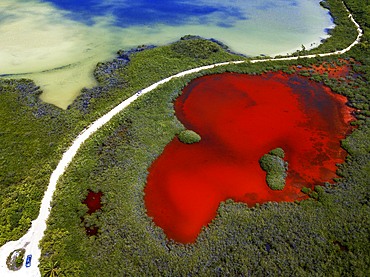
Aerial view of Punta Allen Sian Ka'an Reserve, Yucatan Peninsula, Mexico. Red lagoon near Boca Paila Bridge.
In the language of the Mayan peoples who once inhabited this region, Sian Ka'an means Origin of the Sky. Located on the east coast of the Yucatán peninsula, this biosphere reserve contains tropical forests, mangroves and marshes, as well as a large marine section intersected by a barrier reef. It provides a habitat for a remarkably rich flora and a fauna comprising more than 300 species of birds, as well as a large number of the region's characteristic terrestrial vertebrates, which cohabit in the diverse environment formed by its complex hydrological system.
Along its roughly 120 kilometres of coastline, the property covers over 400,000 hectares of land ranging from sea level to only ten m.a.s.l. The property boasts diverse tropical forests, palm savannah, one of the most pristine wetlands in the region, lagoons, extensive mangrove stands, as well as sandy beaches and dunes. The 120,000 hectares of marine area protect a valuable part of the Mesoamerican Barrier Reef and seagrass beds in the shallow bays. The lush green of the forests and the many shades of blue of the lagoons and the Caribbean Sea under a wide sky offer fascinating visual impressions.
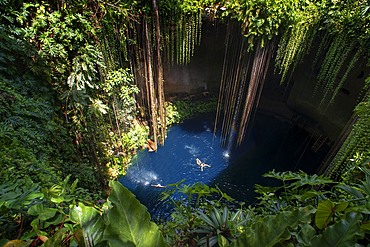
Swimming at Cenote Ik Kil in Yucatan, Mexico, a natural pit, or sinkhole near Chichen Itza. Yucatan Peninsula, Quintana Roo, Mexico. Ik Kil was sacred to the Mayans who used this cenote for both relaxation and ritual services centuries ago.

Estructura 8I-13 El Castillo at Chunyaxche Muyil Maya ruins, rainforest near Tulum, Yucatan Peninsula, Quintana Roo, Mexico
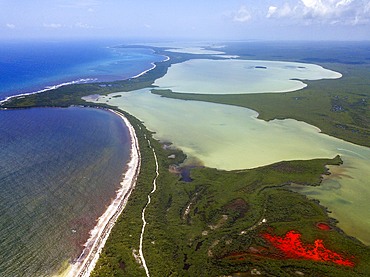
Aerial view of Punta Allen Sian Ka'an Reserve, Yucatan Peninsula, Mexico. Red lagoon near Boca Paila Bridge.
In the language of the Mayan peoples who once inhabited this region, Sian Ka'an means Origin of the Sky. Located on the east coast of the Yucatán peninsula, this biosphere reserve contains tropical forests, mangroves and marshes, as well as a large marine section intersected by a barrier reef. It provides a habitat for a remarkably rich flora and a fauna comprising more than 300 species of birds, as well as a large number of the region's characteristic terrestrial vertebrates, which cohabit in the diverse environment formed by its complex hydrological system.
Along its roughly 120 kilometres of coastline, the property covers over 400,000 hectares of land ranging from sea level to only ten m.a.s.l. The property boasts diverse tropical forests, palm savannah, one of the most pristine wetlands in the region, lagoons, extensive mangrove stands, as well as sandy beaches and dunes. The 120,000 hectares of marine area protect a valuable part of the Mesoamerican Barrier Reef and seagrass beds in the shallow bays. The lush green of the forests and the many shades of blue of the lagoons and the Caribbean Sea under a wide sky offer fascinating visual impressions.
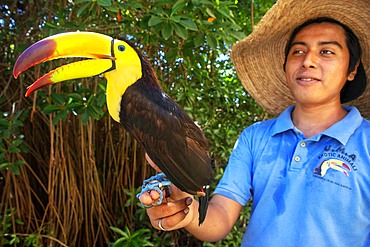
A Mexican staff member holds a tucan at Grand Palladium White Sand Resort and Spa in Riviera Maya, Yucatan Peninsula, Quintana Roo, Caribbean Coast, Mexico

Mexican aztec dress gods at Grand Palladium White Sand Resort and Spa in Riviera Maya, Yucatan Peninsula, Quintana Roo, Caribbean Coast, Mexico.
Aztec clothing was generally loose fitting and did not completely cover the body. When the Spanish arrived in Mexico, the people were surprised to see them in their full armour, with only their faces exposed.
Aztec clothes were generally made of cotton (which was imported) or ayate fiber, made from the Maguey Cactus (also called the Century Plant or American Aloe). Women would weave the fibers into clothing, a task girls were taught as young teenagers. Because of their vast trading network, the Aztecs were able to make use of a beautiful array of dyes, creating the brilliant
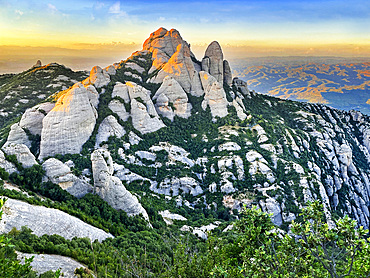
Montserrat is a mountain near Barcelona, in Catalonia. It is the site of a Benedictine abbey, Santa Maria de Montserrat, which hosts the Virgin of Montserrat sanctuary.
Montserrat is a multi-peaked mountain range near Barcelona, in Catalonia, Spain. It is part of the Catalan Pre-Coastal Range. The main peaks are Sant Jeroni (1,236 m), Montgrós (1,120 m) and Miranda de les Agulles (903 m). It is well known as the site of the Benedictine abbey, Santa Maria de Montserrat, which hosts the Virgin of Montserrat sanctuary. Montserrat literally means "saw (serrated, like the common handsaw) mountain" in Catalan. It describes its peculiar aspect with multitude of rock formations which are visible from a great distance. The mountain is composed of strikingly pink conglomerate, a form of sedimentary rock. Montserrat was designated as a National Park in 1987. On this mountain we will have access to the Monastery of Montserrat which houses the virgin that gives its name to the monastery, although it is also known as La Moreneta
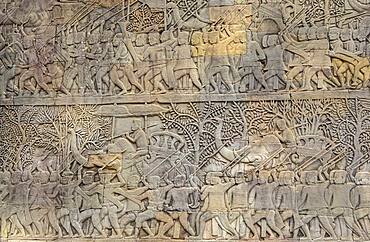
Representation, Ramayana epic, Bas-relief carvings, in Bayon temple, Angkor Thom, Angkor, Siem Reap, Cambodia
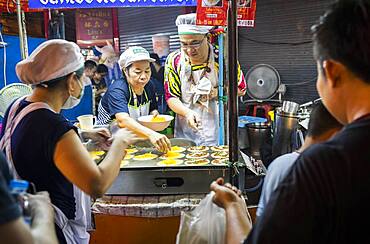
Cooking khanom buang sweet coconut crepes, Street food night market, at Yaowarat road, Chinatown, Bangkok, Thailand
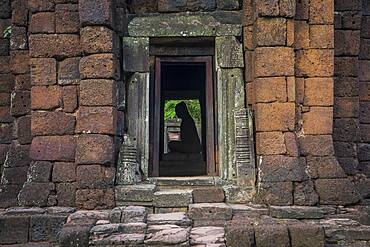
Buddha statue, Central sanctuary, in Prasat Hin Phimai (Phimai Historical Park), Phimai, Nakhon Ratchasima province, Thailand
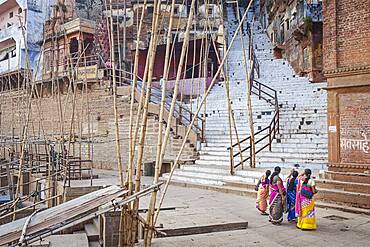
Bamboo to hold, at its top, baskets with offerings, in Panch Ganga Ghat, Ganges river, Varanasi, Uttar Pradesh, India.
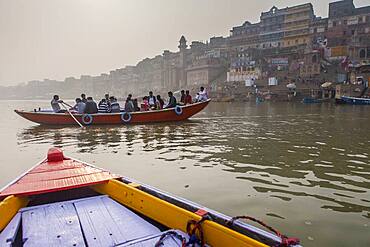
Pilgrims in a boat sailing and praying, Ganges river, in background the ghats, Varanasi, Uttar Pradesh, India.
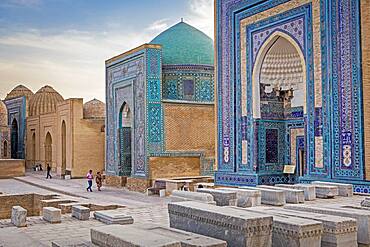
At right Ulugh Sultan Begim mausoleum, in the middle Ustad Ali mausoleum, and at left Shad-i-Mulk Aqa mausoleum , Shah-i-Zinda complex, Samarkand, Uzbekistan
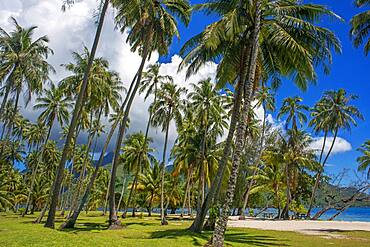
Public beach Opunohu Beach and Ta'ahiamanu beach in Moorea, Cook's Capitan Bay, French Polynesia, Society Islands, South Pacific.
